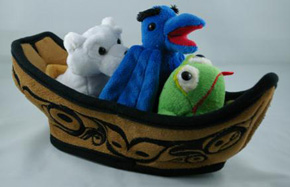STORYTELLING
Thinking about the generic notions of what a ‘day of school’ entails, truthfully most lessons are framed in the form of a story. Whether it’s the story of western science, or the story embedded in your math problem, or the stories you read to your class each day. It’s the stories you get them to share about themselves in their journals and letters. It’s the stories illustrated across construction paper using water soluble paint. Storytelling is in everything we do anyway, it’s as important to people as water and air, and so storytelling drawing on the Indigenous pedagogy of the territory on which you are learning should really be a no-brainer in our classrooms. Because we are teaching on the Salish sea in Lekwungen and WSANEC territories, it would be best practice to start with making lasting relationships with these nations and follow their example in teaching.
Saltwater people, as told by Dave Elliott Sr. perfectly captured what it means to weave storytelling into teaching, and highlighted how immersive learning can be if you are willing to utilize storytelling as your method of communication. As he detailed the grieving mother SEXSOXELWET, lost for direction as she sought comfort after her husband and brother’s killing, Dave Elliott explains how she encountered a family of salmon at the bay of what is now Tsartlip. The beauty of the various pink and silver ripples, and the landscape of the bay, compelled her to return to raise her son and thus the community of the Tsartlip nation began to grow.
I love that Elliott here uses story to teach migration, ecosystems and ancestor linkages. Far from being tales of fiction (a very western/settler way to dismiss the validity of storytelling and its form of record keeping. Also an intentional way to ignore land claims….) , these oral origin stories have hundreds of years of oral vetting to corroborate the details of place. Further, the sometimes muddying details of practical systems such as different animals role in an ecosystem can be more intuitively understood when framed in this storytelling method, making it an excellent way to convey complex systems to learners. As a new teacher, here are some of the ways I would like to try and integrate story telling into my praxis of teaching:

Story canoe puppet from StrongNations.com
- Puppet usage (primary)
- Talking about more subjects in the form of stories, not limiting it to Indigenous creation stories, in order to normalize it for children who may have so far only been exposed to one way of sharing information
- Reading out loud often, no matter the age of the group
- Making, finding, initiating radio shows
- Signpost stories (like the ones used in outdoor education, scavenger hunt to different parts of the story to practice reading out loud)
- Social stories for classroom expectations (supports UDL as well!)
My question: Advocating for story-based teaching with skeptical parents?
Leave a Reply